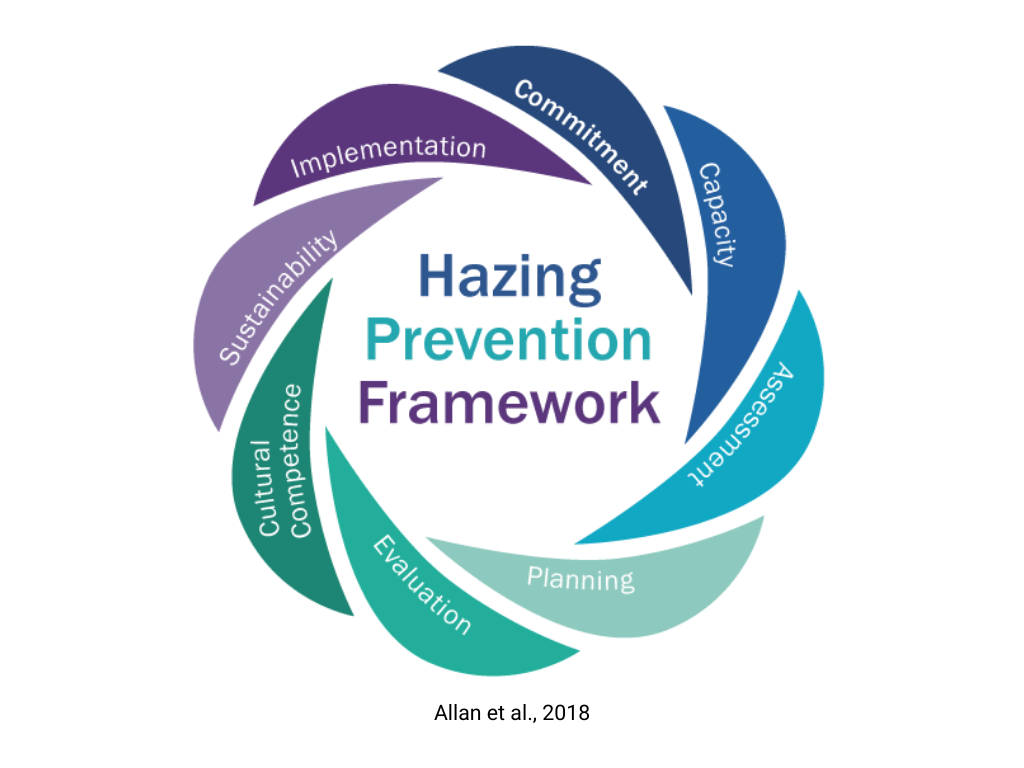Hazing
The George Washington University (“GW” or “university”) is committed to promoting an educational and workplace environment where community members may participate in activities and organizations without compromising their health, safety, or welfare. It is therefore the university's policy that hazing is prohibited. The impact of hazing activities can result in irrevocable harm to their victims, victims' families, and the university community.
What is hazing?
GW defines hazing as:
Any act, whether or not the reported victims voluntarily participated in the act if the act:
is committed in the course of an initiation into, an affiliation with, or the maintenance of membership in, a student organization or group and
creates more risk of physical or psychological injury than students would typically/reasonably encounter in the course of participation in the university and student organizations. (For example, physical exercise to prepare for an athletic team is usually associated with reasonable and typical risks.)
Examples include but are not limited to the following:
Humiliation like name-calling, requiring attire, hairstyles, or make-up that the individual would not routinely choose to wear and that are reasonably likely to cause ridicule.
Requiring someone to carry or have in their possession objects they would not routinely choose to carry.
Depriving someone of regular and routine access to sleep, social connections, academic schedules, food, exercise, etc.
Directly or indirectly requiring someone to complete a task that is not inherent in the goals of the organization and shared among all members of the organization. For example, if everyone contributes equally to cleaning a space ahead of an event, that is not inherently hazing. Requiring particular members to do so because of their positionality with the organization will often be hazing.
Whipping, beating, striking, electronic shocking, placing of a harmful substance on someone's body, or similar activity.
Directly or indirectly causing sleep deprivation, exposure to the elements, confinement in a small space, extreme calisthenics, or other similar activity.
Directly or indirectly causing or inducing another person to consume food, liquid, alcohol, drugs, or other substances.
Directly or indirectly causing or coercing another person to perform sexual acts.
Any activity that places another person in reasonable fear of bodily harm through the use of threatening words or conduct.
Any activity against another person that includes a criminal violation of local, State, Tribal, or Federal law.
Any activity that directly or indirectly causes another person to perform a duty or task that involves a criminal violation of local, State, Tribal, or Federal law.
Read GW's Full Hazing Policy Here
What does GW do to prevent hazing?
GW Hazing Prevention Coalition
In Spring 2025, GW formed the GW Hazing Prevention Coalition, "the Coalition", a multi-disciplinary team committed to creating and promoting hazing prevention efforts across the university. The Coalition aims to provide and support hazing prevention efforts to all community members, including faculty, staff, and students.
What research-based approaches guides GW's hazing prevention?

The research-based Hazing Prevention Framework informs campus-wide hazing prevention programming.
The 8 Components of Hazing Prevention Framework are:
1. Commitment: Investment of human, financial, and structural resources and public endorsement of actions to foster a campus climate that is inhospitable to hazing.
2. Capacity: Development of human and structural resources needed to effectively implement comprehensive, campus-wide hazing prevention in a college or university setting.
3. Cultural Competence: Understanding sociopolitical and other identity-based characteristics of students, student organizations, groups, and teams, and of the institutions in which they are situated.
4. Assessment: Use of multiple methods and sources to measure and characterize campus hazing within a given context.
5. Planning: Use of assessment data to develop data-driven, intentional, and measurable prevention goals, including the development of prevention
strategies tailored to specific populations in a given context.
6. Evaluation: Formal documentation of the process and impact of prevention strategies as a means to measure and promote strategies with evidence of efficacy.
7. Sustainability: A process of maintaining commitment and momentum through persistent cultivation of programs, relationships, resources, and
communication.
8. Implementation: Use of specific strategies and approaches considered particularly promising for hazing prevention.
Source: StopHazing
How does GW respond to allegations of hazing?
GW fully investigates allegations of hazing against students, faculty, staff, and groups. To report hazing, please notify the appropriate office listed below:
- Allegations of hazing that involve suspected or alleged sexual harassment should be reported to the Title IX Office regardless of the role of the respondent. Designated reporters must report this information to the Title IX Office pursuant to their responsibilities under the Title IX Sexual Harassment and Related Conduct Policy
- Student respondent(s) should be reported to Conflict Education and Student Accountability.
Staff respondent(s) should be reported to Human Resources Management and Development.
Faculty respondent(s) should be reported to the Office of the Provost.
GW maintains a transparency report which includes all findings of responsibility for hazing charges.

